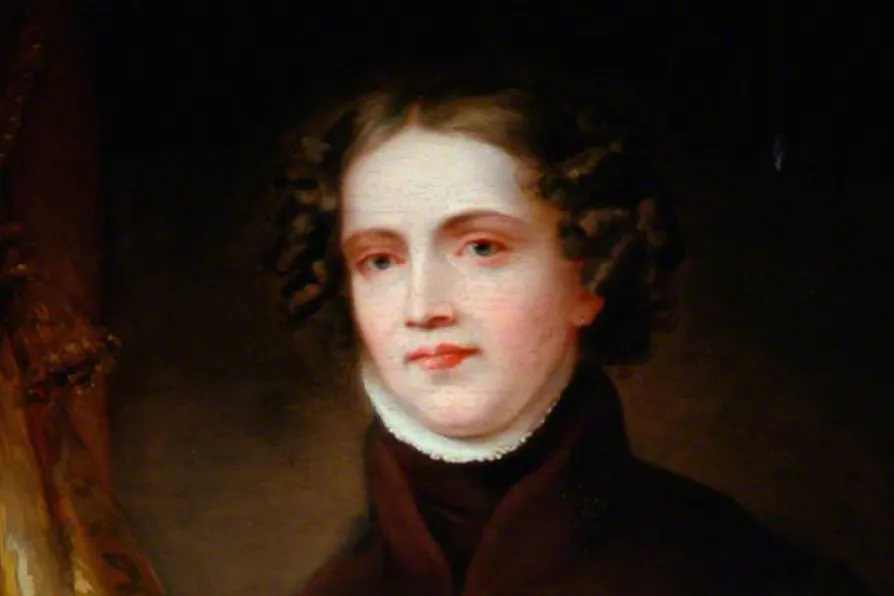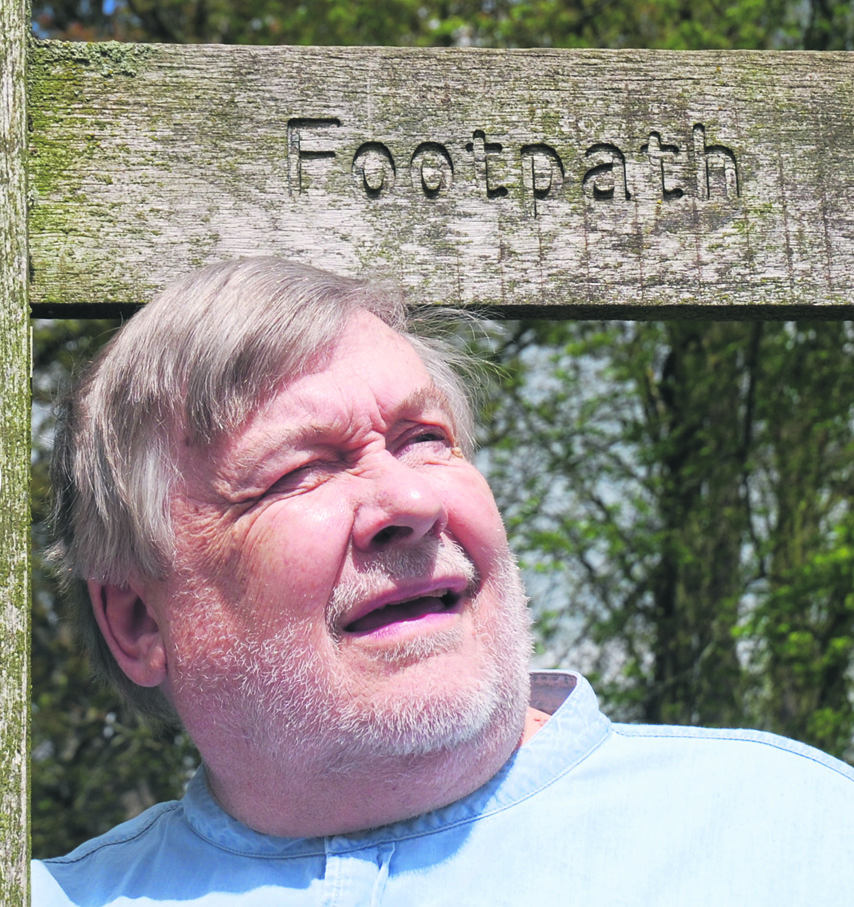VINCE MILLS cautions over the perils and pitfalls of ‘a new left party’


TWO years ago, at the end of February 2018, a plaque was unveiled at Holy Trinity Church in York. The plaque replaced a previous short-lived plaque that had angered thousands of York residents and LBGT activists all over the country.
The new plaque had a corrected rainbow edging and the wording: “Anne Lister, 1791-1840, of Shibden Hall, Halifax, Lesbian and Diarist, took sacrament here to seal her union with Ann Walker, Easter 1834.”
The original mealy mouthed plaque included the description “Anne Lister 1791-1840 Gender-nonconforming entrepreneur...” as well as a multi-coloured edging no LBGT person could recognise as a rainbow.
Despite the fact that the York Civic Trust had 184 years to get the plaque wording correct, officials missed the mark by a mile. Thousands of people signed a petition to get a more accurate and truthful inscription on the plaque.
The protesters demanded: “Anne Lister was, most definitely, gender non-conforming all her life. She was also however, a lesbian. Don’t let them erase this iconic woman from our history.”
They demanded that that woolly phrase “gender nonconformist” be replaced with the far more accurate and truthful “lesbian.”
Anne Lister, who has been described as “the first modern lesbian” was yet another woman who had been hidden from history. She was one of the first lesbians to write about her sexuality. She did it in a diary of over five million words.
In 2011, Anne Lister’s diaries were added to the register of the Unesco Memory of the World Programme. The citation said that the “comprehensive and painfully honest account of lesbian life and reflections on her nature” made them unique.
Her huge and detailed, coded diaries, covered everything — details of everyday life and work in 19th century Yorkshire — and documented many love affairs with women in explicit erotic detail.
Anne Lister’s diaries began in 1806 as scraps of paper, and by her death would stretch to 26 volumes. Many entries deal with her awareness of how people viewed her. One typical example read: “The people generally remark, as I pass along, how much I am like a man.”
About a sixth of her diary was written in complicated and almost impenetrable code of her own devising. It combined the Greek alphabet, zodiac, punctuation, and mathematical symbols.
These coded sections were where she recorded intimate sensual details of her love affairs with many women. For instance an “x” in her diary stood not for a kiss but for mutual orgasm.
Anne used the term grubbling to describe her lesbian sexual encounters. She recorded how one female lover allowed her to “grubble her queer” through her petticoats.
Anne’s complicated code meant that these sexual parts of her story remained hidden until long after her death. They were finally decoded by one of her descendants, John Lister, and his schoolmaster friend, Arthur Burrell.
When the pair finally cracked the code they were so shocked that Arthur urged John Lister to burn the diaries. Fortunately he didn’t destroy the work and instead hid the diaries away behind wood panelling in the Lister family home Shibden Hall, where they remained hidden until his death in 1933.
The Lister family donated the Hall to Halifax Corporation in 1933 and in 1934 the Corporation opened it as a museum. At this time the diaries were uncovered and gifted to Halifax Library. Arthur Burrell somewhat reluctantly shared his copy of the code.
The erotic and secret content remained hidden until 1982, when Helena Whitbread, a 52-year-old teacher researching the books, was given a copy of the code and started to uncover the full story.
Anne Lister was born on April 3, 1791, in Halifax. She was the second child and eldest daughter of Jeremy Lister, a British officer during the early days of the American Revolution, and Rebecca Battle.
Anne soon learned to love books. She wrote to her aunt, “My library is my greatest pleasure.” At this time women were barred from universities but Anne mastered Greek, algebra, French, mathematics, geology astronomy and philosophy.
In 1836 aged 45 she inherited Shibden Hall and 400 acres from her uncle James and aunt Anne, with whom she had frequently stayed. She became a powerful Yorkshire landowner — as well as a successful businesswoman.
Income from farm tenants allowed her the freedom to pursue her unconventional life. Helping to run her aunt and uncle’s estate, she demonstrated her head for business. She invested in property, town and country, as well as shares in canals, railways, and other industries.
When she opened her own coalmine, macho mine-owners in Halifax burnt effigies of Anne and her lover and business partner Ann Walker in the town.
This success as a capitalist — very unusual for a woman — gave her the money to enjoy her two passions: the restoration of Shibden Hall and European travel.
In the 1800s male homosexual acts were still illegal in Britain. Anne wrote of men being hanged in Halifax for such acts.
Lesbianism has never been illegal in Britain, but that didn’t mean it could be practised without serious repercussions. Anne was much less afraid than most women at the time to be open about her sexual feelings, although she still wrote her diary in code.
Anne met her first love, Eliza Raine, at boarding school in York. At 15 the pair shared a bedroom. It was then Anne devised her first code in order to record in detail these early sexual experiments.
Anne moved on to sexual relationships with other pupils and one, Mariana Belcombe, always simply “M” in the diaries, remained her lover for most of Anne’s life — although this never stopped Anne having many more lovers.
Ann and “M’s” passionate affair continued during Mariana’s marriage to Charles Lawton but soured when Mariana told Anne she was ashamed to be seen with her because of Anne’s masculine appearance.
When Mariana infected Anne with an incurable STD this finally ended their long on-and-off relationship.
Anne’s last and perhaps most fascinating love was her final partner, Ann Walker, 13 years her junior and from a mill-owning family who had the wealth and social standing that Anne craved. Anne rather unkindly wrote in her diary: “I care not for her — tho’ her money would suit.”
Anne planned to marry her lover — an idea nearly two centuries before its time. So, at that York church on March 30, 1834, the two women secretly exchanged marriage vows and rings and took communion together. Although without a priest’s blessing, Anne Lister believed they were married in the eyes of God.
The newly married couple embarked on a three-month honeymoon through France and Switzerland.
The Leeds Mercury publicly mocked them, announcing the marriage of “Captain Tom Lister of Shibden Hall to Miss Ann Walker.” Anne commented in her diary: “Probably meant to annoy, but, if so, a failure.”
In 1838 the couple headed for the Pyrenees. Anne wanted to be the first person to officially climb Vignemale, at nearly 11,000 feet the highest peak in the French Pyrenees. With tied up petticoats and nail-studded leather boots she made the hard climb to the summit.
To this day Pyrenees mountain maps bear the legend Collado de Lady Lister.
The couple continued on through Sweden to Russia, exploring St Petersburg and Moscow, then to Kutaisi, a city almost unknown to visitors on the ancient Silk Road in what today is Georgia.
Just six weeks later Anne was dead from a fever. She never reached 50. Ann Walker took eight months to bring her wife’s body and diaries 4500 miles home to Shibden Hall.
Anne Lister was buried in Halifax Minster on April 29 1841. Her tombstone, perhaps to hide her away, was covered by a floor in 1879. It was only uncovered in 2010.
Ann Walker’s family had her declared insane and sent to an asylum. She died in 1854, aged 51.
The amazing story of these two women has become much better known because of the BBC TV drama Gentleman Jack, based on Anne’s diaries. The series is still available on BBC iPlayer.


















